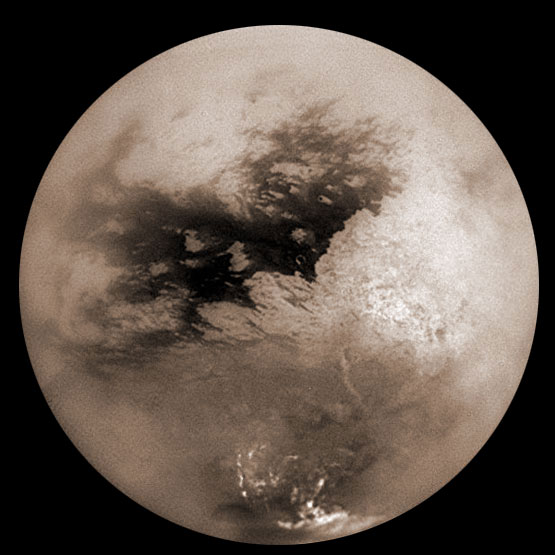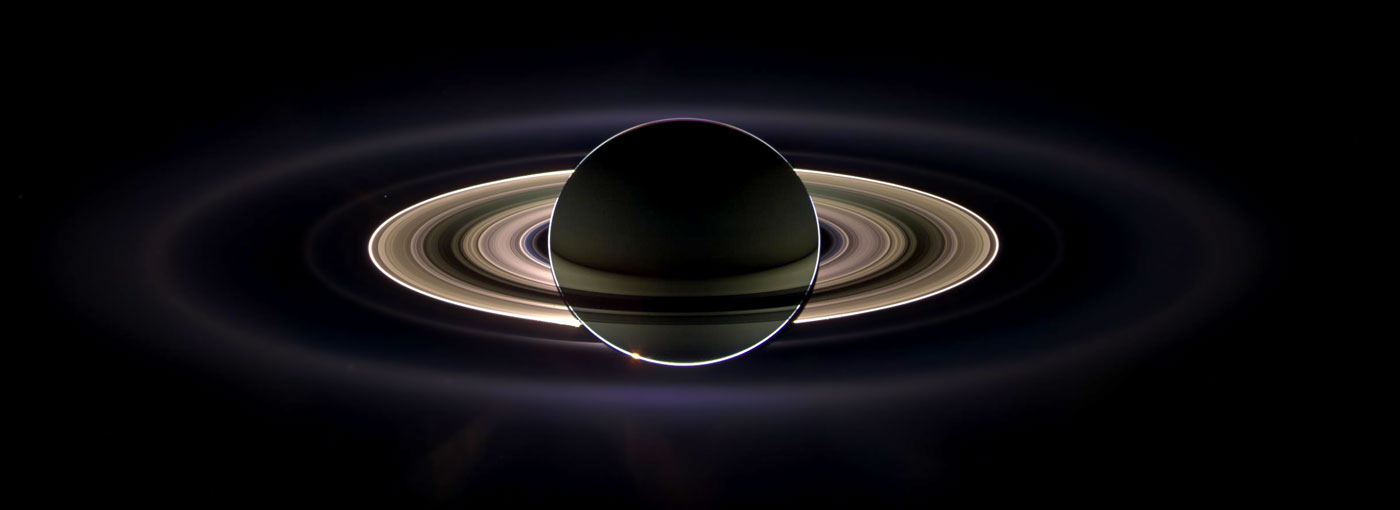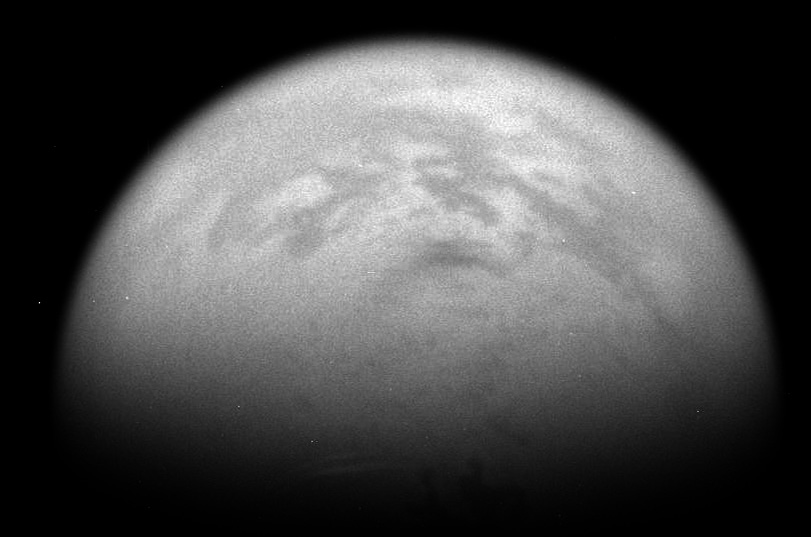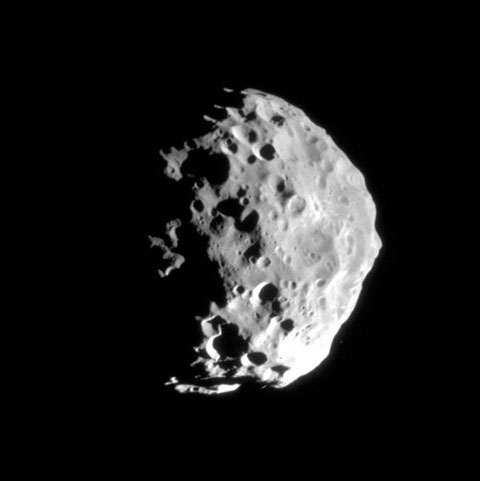

In 1997, we aimed a rocket towards Saturn and sent a 13-foot-wide satellite off on a mission to explore the strange worlds in our own (relative) backyard.
This month, NASA announced plans to extend the Cassini space probe's Saturn sojourn until 2017—nine years longer than its original end date of 2008.
Why, exactly, does Cassini need those extra years? Most people probably know the mission best for the spectacular space photography it's produced.
But NASA is hoping to get more than just a gallery of beautiful images out of extending the orbiter's lifespan.
Armed with an array of 12 instruments—more than twice the number of science tools included on normal missions—Cassini is sort of a Swiss Army Knife in the sky.
As its mission continues, it will gather data that could help us pinpoint life-sustaining planets, or power our own with clean energy.

As it turns out, lift-off takes a lot longer than it looks on TV. The Cassini-Huygens mission, recently renamed Cassini Solstice Mission, has roots going all the way back to the early 1980s, when American and European agencies first recommended teaming up to send a probe to Saturn. In a lot of ways, it was a precursor of the International Space Station—proof that countries could overcome their differences and work together to further space exploration. It's the sort of thing that would have brought a tear to Gene Roddenberry's eye.
But publicly funded projects—particularly ones to the tune of $3.27 billion—cannot survive on space-kumbayas alone. To produce results worthy of the investment, Cassini was outfitted with sensors that allow it to collect information on everything from the space dust that hits it, to the infrared waves emanating off Saturn.
Those high-tech tools could actually collect more data than Cassini can send home, said Curt Niebur, NASA program scientist on the Cassini mission. That's because all the information--photos, sound and recorded data of all sorts--has to squeeze back to Earth through a very limited radio connection.
"The analogy today is a wifi signal. The further you get, the less data you can exchange," he said. "That's our biggest challenge. Most people don't realize that the spacecraft isn't taking data every second of every day, mostly because we just don't have the pipeline to send it."

But the information that does make it here is fascinating stuff. For instance, scientists had long known Titan, one of Saturn's many moons, was unusual, but, thanks to Cassini, we now know that it's more like Earth than anyone ever suspected. Despite an average temperature of -200°C, Titan has lakes, rivers and storms—they're just made of liquid methane, instead of water. There's also an extreme sort of weather cycle that evaporates lakes and moves them from the North Pole to the South along with changing seasons.
And Titan has another little secret that Cassini clued researchers in on--deep beneath the moon's surface, it's warm enough to harbor liquid water and create the kind of conditions enjoyed by bacteria. That's an important discovery, because it means we can start looking for life on planets we'd previously ruled out.

"We thought we'd have to look for a warm planet like Earth, but we're finding that in these cold, dark places there are processes occurring to generate heat under the ice, and life could quite possibly arise," Niebur said. "It's important because there are lots of gas giants out there in space. And they have lots of moons. And that increases the chances of us finding life dramatically, because those icy moons could be places where life exists after all."
Cassini is also doing research that could help make our own planet more hospitable. Don Gurnett, a professor at the University of Iowa who studies experimental space plasma physics, is using Cassini to collect information on electromagnetic waves in space, some of which produce fascinating sounds. For instance, particles in the radiation belt around Saturn spontaneously emit plasma waves--electromagnetic signals that move through the ionized gases that surround a planet. When that happens, it creates what Gurnett calls a "dawn chorus", similar to the sound of singing birds.

But these spontaneous plasma waves aren't just pretty. They also alter the movement of radiation belt particles, causing some to hit the atmosphere and weakening the belt's intensity. The data being collected by Cassini could help us better understand how this process works and why the plasma waves happen to begin with. And that, Gurnett says, could have serious implications in the world of alternative energy.
That's because fusion--a safer type of nuclear power--draws on the same principles. Radiation belt particles are held in their "belt" by the planet's magnetic field. Likewise, a nuclear fusion reactor attempts to hold superhot gases in place with a magnetic field. But, as in space, spontaneous plasma waves send the gas particles careening off out of the field. When that happens in a fusion reactor, it cools the gases, and keeps them from staying hot enough to efficiently produce energy. If we understand the spontaneous plasma waves, we might be able to finally make a fusion reactor that works as a reliable energy source, Gurnett said.

See more images from the Cassini mission at NASA'a Cassini multimedia page. Reflection of Sunlight off Titan Lake. Bursting at the Seams. Two-faced Janus. A tectonic feast. In Saturn's shadow.
37 Comments • Add a comment
Great work, Maggie!
Terrific story, mind-blowing layout. Nice work, Maggie and Rob!!
You guys should do specials like this more often. 'Tis pleasin' to th' eye!
Thanks, Maggie!
Fantastic.
nice job on the layout
Credits: The typeface is GeoSans, by Manfred Klein. Gattaca promo materials and Ross Berens' amazing solar system prints were in mind when marking up Maggie's article.
Wow, great story made even better with amazing design. Well done all around.
Whoa, Nellie! I love what you've done with the place. :-)
Stunning visuals, great story!
Please do more
Thankfully, the luddite anti-nuclear fear mongers didn't manage to scuttle Cassini's launch despite their extremely vocal attempts to do so. Cassini's extravagant success has smashed those zealots' arguments better than any reasoned argument ever could. How many people have been inspired by the Cassini spacecraft's exploration of the Saturn system? How many people have been given pause by the imagery or the factual discoveries being sent by Cassini and have been inspired to look up from their desks or their couches and think about the stars?
ALL THESE WORLDS ARE YOURS EXCEPT EUROPA. ATTEMPT NO LANDING THERE. USE THEM TOGETHER. USE THEM IN PEACE.
Shame there's not more info on the pictures. The one right at the top -- with the bright patch, just above the "SS" in "Cassini" -- is of a specular reflection from a very flat surface, almost definitely a lake of liquid hydrocarbons. In otherwords, that's the sun glinting off the lake.
Much, much more at http://ciclops.org/ (see yesterday's awesome release of "forest of jets" spewing from Enceladus' south pole, for instance.)
Beautiful effort from you two and beautiful results. Great thanks.
I love science for science. That we have to justify it with 'results' is a shame. For example, more energy through fusion and cleaner to boot? My bet is on fusion having its own set of problems and us doing only more of the same shit as we always did with more energy. Except for loving: did we ever do more loving because we spent gas like crazies? Then again, thankfully, more energy will mean more science and that, in itself, is good.
Very good.
A civilization may be measured by its astronomical knowledge, IMHO.
Well done.
I watched Cassini go up back in '97, from the steps of the school I was working at at the time. Cheered, while others at the Cape protested. I believe even Michio Kaku got into the act of siding with the protesters, all because Cassini carried three radioisotope thermoelectric generators.
Anyway, what a grand mission it has been. Again, Maggie, great post!
Great work, Rob! This thing looks gorgeous!
Awesome piece, kudos to both of you. Hope to see more specials like this in the future!
OMG! I was there, protesting. Can we make up now? The satellite didn't crash, we're all still here, no flying laser tanks in space. Michio Kaku was also there; he wasn't as famous as he is now - and he spoke out against the militarization of space, which we saw the nukes as symbolic of. It's all muddy now, though.
Great post. I'm always amazed by how beautiful these pictures are. It's quite odd, since unlike items in our own [evolutionary or memetic] environment, we have no reason to find them so attractive.
My God, is picture #2, with the rings, a real, true-color photograph? If it is, it just blows my mind -- it looks completely fake.
Beautiful design! I'd like to hear Walter Cronkite's narration of it.
Perhaps Cassini is returning to check out the persistant hexagonal shape on One of Saturn's poles - it's amazing and a definite geometric shape . I've always wondered why astronomers haven't said more about this - last I read, they had no idea what is causing the formation.
@19 SamSam: Whenever at a loss for a desktop background, that photo is my standby. The amazing, hidden gem of that image is that in the outer-ring to the left there is a pale blue speck of light, of which happens to be our planet Earth at a distance of almost a billion miles away. Here's a link to the full info on the image: http://ciclops.org/view/2230/In_Saturns_Shadow_-_the_Pale_Blue_Dot
This was a real treat!
Wow. Gorgeous!
Nice....very nice.
great! This is the face of high quality internet journalism!!!!! yes!!
I really like this article's content and the layout. It is almost as though I was thumbing through a glossy mag as I read it. The images are incredible!
If you think these images of Saturn are cool, check out Cassini's Webby-award-winning website at http://saturn.jpl.nasa.gov/ . The site is updated more than daily, with the latest images transmitted from Saturn to Earth by the Cassini spacecraft. The website is both beautiful and informative. And, yes, the backlit image of Saturn is real, although I admit it looked fake the first time I saw it, too. It's a view of Saturn (and Earth!) that can only be taken from beyond Saturn, looking back toward the center of the solar system. Enjoy!
I've been lucky enough to work with and support the Cassini project (I'm a Unix admin here at JPL). Props to BoingBoing and Ms Koerth-Baker for this great article.
Excellent! More!
no-- it's spelled MOAR
That's original!
Science is cool. And articles like this one show that to be true. Thanks goodness there are minds out there that both grasp the intricacies of science, and the subtleties of storytelling and page design. Great work.
All is forgiven. Jonathon, all is forgiven. By the way, it was a pretty impressive launch from just over 200 km away, but the really great part? Noctilucent clouds about an hour or two later. Too cool.
Here I was, just thinking that was a speck of dust on my computer screen.
I am an engineering student from National Institute of Technology, Durgapur,India.
Can you please mail me the data from Cassini spacecraft,as i will be needing them for my research work?
Send a comment